
Shi Potian Talks about Zisha: Knowledge of Early Zisha Factory Pots
Share
1916-1939 years <br> Jinding trademark horizontal pot "Wu Desheng Pottery Shop" (also known as company or shop) was established by Wu Hanwen in the fifth year of the Republic of China ( 1916 ). The location of the store is located at the edge of Jiaoqiao in Yixing County. In the early days, the seal was "Wu Desheng" Yangwen seal script small square seal, and the bottom cover was used together. Later, it was printed as Dafang Zhang in Yangwen seal script "Made by Wu Desheng". In the middle period, the seals used in the big round Zhangyang script were "made by Wu Desheng" and "made by Wu Desheng in Yixing". In the late 1920s, Wu Hanwen founded the famous trademark "Jinding Trademark" of the "Wu Desheng" shop name. The "Jinding Trademark" stamp has a tripod as a pattern in the center, and the four corners are Yangwen regular script "Jinding Trademark", which is a special stamp for "Wu Desheng" store number order pots. In the later period, Wu Hanwen also inscribed the square chapter "Songhexuan" in Yangwen regular script on the refined pot. "Wu Desheng" and "Jinding Trademark" are stamped on the bottom of the pot, and the lid handle is usually stamped with a small square seal of the maker. After the outbreak of the Anti-Japanese War, "Wu Desheng" closed down, and the stamps of "Wu Desheng" and "Jinding Trademark" were still used until the end of 1939 .
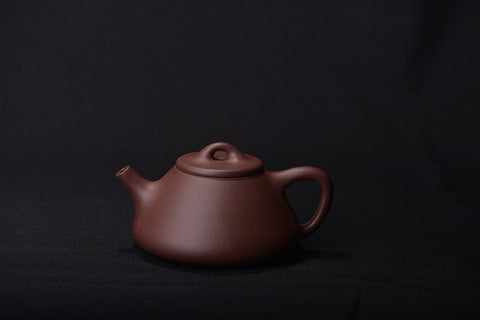
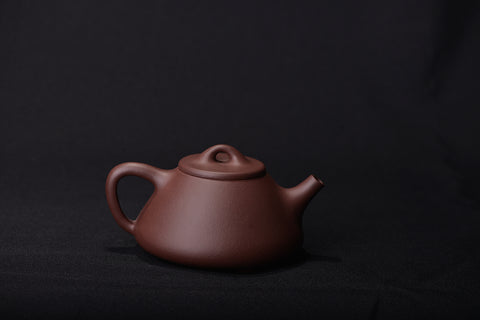
Early Republic of China
Real note: It is generally found under the handle of the Zhuni sketch pot, which belongs to the mark of pottery in the early Republic of China! Made by Cheng Shouzhen or his disciples.
Fuji: The founder is Cheng Shoufu ( brother of Cheng Shouzhen ) ; born in the late Daoguang period of the Qing Dynasty, his native place is Hangzhou, Zhejiang Province, he followed his ancestors to Dingshan at the age of seven, and settled in Shangyuan Village. He is the adopted son of the descendants of Meng Chen; At that time, he was a master at making small red clay teapots, and his craftsmanship was unique. Most of the teapots he produced were sold to the Nanyang area. "Two words. The second generation is Cheng Jinmao, who inherited Cheng Shoufu's father's business. The third generation is Cheng Zhenqing, the grandson of Cheng Shoufu, who was born in 1907. When he was young, he followed his grandfather Cheng Shoufu to learn how to make small red clay pots. When he was young, he helped "Wu Desheng" make pots. When Cheng Zhenqing was 27 years old, Wang Yinchun was a matchmaker. Zhou Fengdi, the daughter of the Zhou family in Nanjie, Shushan, got married ( seeking relatives ) and had a daughter and a son. The daughter was Zhou Zhihua, and the son was Zhou Zhixuan. Four generations.
He once hired Wang Yinchun to make a horizontal pot, and put a small seal of "Fuji" on the bottom; later, he was poached by his colleagues and ordered him to use "Yang Xian Xi Yin Shi Wang" as the base payment, and put Wang Yinchun's small stamp on the bottom and cover.
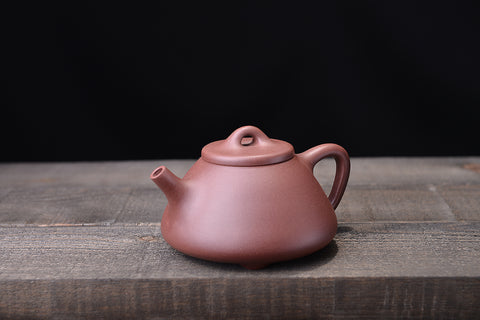
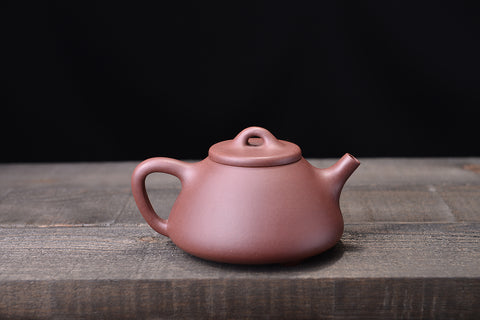
1930s-1950s <br> Helmet-cap standard pots, also known as "expanded lid level", the base soil is fine sand and pear base. Because of the continuation of horizontal pots in the Chaoshan Kung Fu tea drinking market, the common number of cups is 2 cups, and 4 cups are rare. , More than 6 cups are rare, and a few of them have the number of cups in the lid, and the 4 -cup pot has the "six cups" style. The main feature of the shape is the upper helmet, which is mostly spherical, the spout is upturned, and the handle is thin like a rat's tail. The bottom of the pot is mainly made of "Jingxi Huimengchen" seal, and the bottom ring is full of two pieces of soil. The repair is also different from the later standard pots. The cover wall and barrel body still inherit 60-70% of the Yixing Nanhu process. (Note : Taiwan is accustomed to describe the capacity of teapots by the number of cups. The capacity of one cup is about 15cc ; 2 cups is 30cc... and so on)
In 1952, seven people from the "Tangdu Ceramics Production Cooperative" including Pei Shimin, Wu Yungen, Zhu Kexin, Shi Fusheng, Fan Zhenggen, Shao Liuda, and Fan Zude established a purple sand factory, which was affiliated with the Tangdu Ceramics Production Cooperative and used the "Yixing Tangdu Ceramics Production Cooperative" ” Printed in a specific year.
The stamp is a regular script stamp "produced by Yixing Tangdu Pottery Production Cooperative". The characters are engraved from right to left, which is different from left to right today. On the top is the inscription "Yixing"; in the middle is the inscription "Tangdu Ceramics Production Cooperative"; on the bottom is the inscription "Production". In addition to being used by the employees of the Zisha factory, this stamp is also used by those who order pots and supply blanks from the people. The stamped money will continue to be used until half a year after the establishment of the "Yixing Shushan Ceramics Production Cooperative".
Printed stamps of Shushan Ceramic Production Cooperative in Yixing from the end of 1954 to 1955
The purple sand industry in Shushan and Qianshu areas has achieved cooperation, and the "Yixing Shushan Pottery Production Cooperative" has been established. At the beginning of its establishment, the seal of "produced by Yixing Tangdu Ceramics Production Cooperative" was still used. Half a year later, the stamp "produced by Yixing Shushan Pottery Production Cooperative" began to be used. The stamp is a round seal in regular script "produced by Yixing Shushan Pottery Production Cooperative". The words are engraved from right to left. On the top is the inscription "Yixing"; in the middle is the inscription "Shushan Ceramic Production Cooperative"; on the bottom is the inscription "Production". In addition to being used by the members of the society, the printed money was also used by those who ordered pots and blanks from the private sector until the establishment of the "Yixing Zisha Craft Factory" in April 1958 .

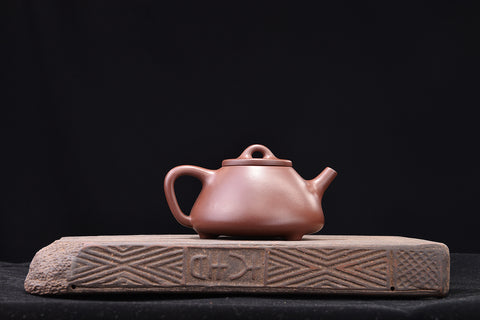
1950s-1959s <br> Horizontal pots in the early 1950s
The soil is orange red and vermilion, there are 2 , 4 , 6 , 8 cups, signed " China Yixing " , " Jingxi Huimengchenzhi " , " Jingxi Nanmengchenzhi " , " Yixing Huimengchenzhi " , mainly made of Thailand, Hong Kong, and Japan mainly collect orange-red tire soil from Thailand and Hong Kong, and Japanese tire soil is mostly red and clear red. Generally speaking, the six-character inscriptions are earlier than those in Yixing, China, the Japanese line pots are slightly smaller than the Thai line pots, and the walls are mostly shorter, but they are slightly later (after 1956 ) . " Yixing Huimengchen System" before 1958 --- Master level pot sold in Thailand and sold in Japan...
After 1980, it was rarely signed... Strictly speaking, it has no meaning of boutique.
The difference between "Yixing Huimengchen System " and " Jingxi Huimengchen System " ... is in the overall exquisiteness . From the photos, we can also see the " Yixing Huimengchen System " eight-cup pot in 1950 .. .In fact, there are only 7 cups that say that Yixinghui is a master pot ... There is a reason for it. In addition, it is said that the pot that was signed "Jingxi Hui Mengchen" generally speaking, if it is an early pot from the previous factory, It is the commercial pot produced by the workshop. If the author's small chapter is not written in the cover, it is impossible to find out the potter because of the large number of apprentices who have produced it for a long time, and even if the name of the worker is found out, it is meaningless!
Note 1 : According to the specifications of the previous factory, this kind of commercial pot is classified as "kitchen utensils", which is a household item and has no artistic value, so the author's name will not be specially included.
Note 2 : Famous teapots are special works of art, so they have the habit of paying the author's money.
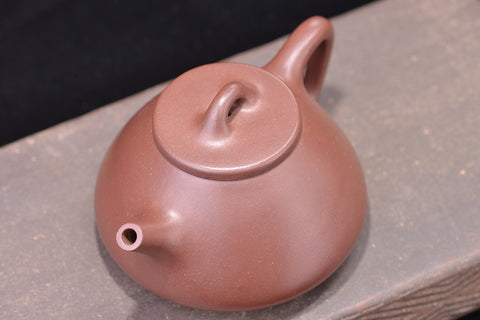
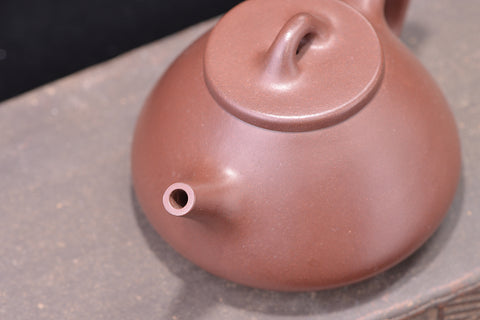
1954-1958-1960s <br> Tang Po Standard Pot, commonly known as "Gao Tang Po", has a capacity of 8-10 cups. This shape is based on the ancient lotus body with a large cover in the late Qing Dynasty . It was also produced in the 1980s, mainly recovered from Japanese lines. The soil is generally thicker than standard pots , and most of them are clear red vermilion clay pots. Those with high temperature are dark red with a fine sandy feel. "Chen Zhi " and " Yixing Huimeng Chen Zhi " and " Gao Tang Po " inscribed on the inside of the cover. Because Japanese tea utensils are elegant and love lacquer ware to paint gold, a few Gao Tang Po have gold paint, but the date is slightly later ( mostly after the 1960s ) However, the allusion to the soup stock can no longer be tested. At that time, the Japanese used this vessel as a "soup bottle" or "soy sauce bottle". There is also a variant of Tang Po's "half egg", which is very small and has never been seen in gold. After the 1980s , a batch of "Gao Tang Po" was also produced, but the clay color process was poor, and it was the material used at that time ( little red clay ) . The standard soup pots are small in quantity and high in price. It is not easy to find a set of " Jingxihui " , " Jingxinan " and " Yixinghui " .
In 1958, Yixing No. 1 Factory was established
In 1958, Yixing was officially listed ( 1954 began to organize).
After 1958 , Tingji, Xiuchun, Gengdi, Jingxi Wangzhi, Jingxi Chenzhi, etc., " Celebrating the 50th Anniversary of the Founding of the People's Republic of China " , " Mao Yinghong " .
The early standard pots of 6 cups and 8 cups have Tingji inscriptions , but the inscriptions are on the bottom of the pot. Tingji is not a pottery factory , but the author's name is Wang Tingmei.
In the early days, Wang Tingmei, Bao Zhongmei's lover, Ms. Shi Xiuchun, and Gao Ming's mother, Ms. Zhang Gengdi, used to make commercial horizontal pots in the first factory for a long time.
The early commodity pots of Yixing Zisha Craft Factory, such as Jingxi Wangzhi and Jingxi Chenzhi, used to sign like this. However, there are countless counterfeit products in modern times.
Upon inquiry, the government unit has not received an order to produce this inscription " Celebrating the 50th Anniversary of the Founding of the People's Republic of China " .
Mao Yinghong is a worker in the workshop ( Note 1 ) of Zisha Craft Factory. She retired around 1997~1998 and all produce commercial pots. Mao Yinghong's daughter is married to Wang Yinxian's son Yao Zhiyuan.
( Note 1 ) Workshop: It is the "unit name" of a factory that produces large quantities of goods, and all staff in the workshop are "workers".
All famous artists belong to the "Institute", and only the staff of the Institute have titles.
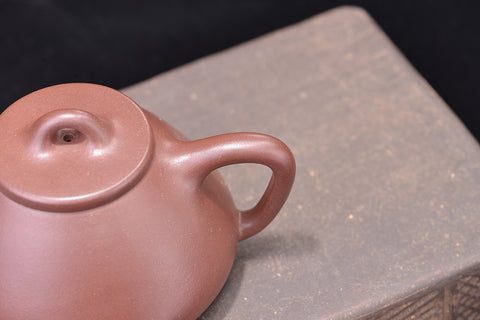
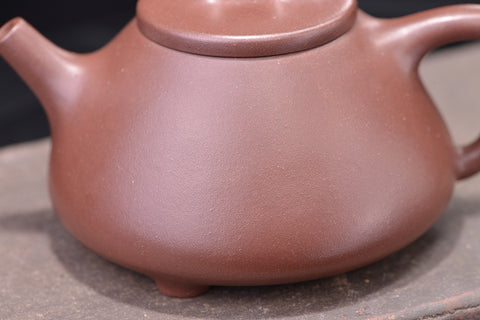
1960s _
1960s five-shaped pot
Five-shaped pots, as the name suggests, are standard pots with five shapes, including "flat lamp", "eunuch", "xishi", "meat pie" and "guava" [Taiwanese pronunciation] five shapes, the first batch of 4 cups The vermilion clay five-shaped teapot was made in 1965-1966 and signed " Yixing, China " . The soil and mud are small red clay from the 1960s . It is a representative of Yixing standard teapots before the Cultural Revolution. Or personal names are rarer. There are also five-shaped teapots in Zisha, but they were produced very late in 1978 after the Cultural Revolution. No six-character pots such as " Jingxi Huimengchenzhi " or other five-shaped teapots have been seen. The five-shaped pots also produce 6 -cup red clay pots, "Jingxi Zhu Zhi" and "China Yixing" with bottomed bottoms. The soil tires of Yixing in China are similar to those of the 1960s , but the color of the clay pots is reddish orange. The oily and sandy feel is obvious in the 1960s , and part of the upper cover has been weathered and has become rough. The construction method of the inscribed "Jingxi Zhuzhi" is the same as that of "China Yixing", but a group of soil tires has been seen so far. It is relatively loose. If it is not So far, it has been severely weathered.
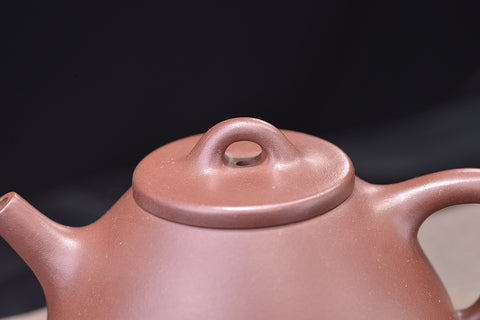
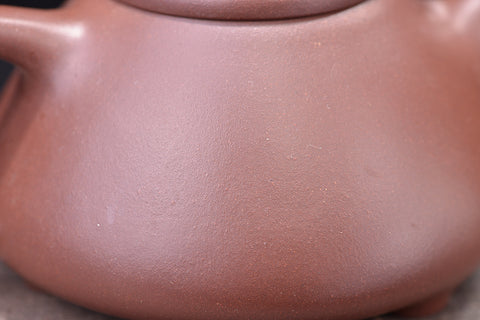
1960s~1970s " China Yixing" and "Yixing Zisha" Frameless Bottom Horizontal Series Commodity Pots
Yixing Zisha Craft Factory ( No. 1 Factory ) did not actually produce this kind of product, but it has sold many such product pots ... how should I say it? .That is to say, because it was closed in the middle and late 1960s , the Zisha Factory once commissioned "country pottery households" to produce large quantities of "China Yixing" and "Yixing Zisha" borderless horizontal series commodity pots to cope with the huge Zisha Factory Order.
After 1960 , Yixing continued to use unused clay from 1930 to 1950. The red clay had a high content of stone-yellow clay, and the mud was uniformly refined, adjusted and mixed with mud, and the fixed kiln firing method with professional division of labor was stable. With the aid of moulds, the standard pots of the 1960s are characterized by their fineness, clear red clay color, and " China Yixing " on the bottom of the pot, which greatly replaces the other three 6 -character stamps.
Around 1960, Malaysia's "Gao Quan Fa Tea Shop" was the first tea shop to order tea pots. Gao Quan Fa was a Malaysian tea shop. It had a branch in Singapore in the early days . Its mud color is comparable to that of the small red mud of the five-shaped pot . After the late Cultural Revolution, there were also successive orders. Among them, 1978-1982 is the bulk.
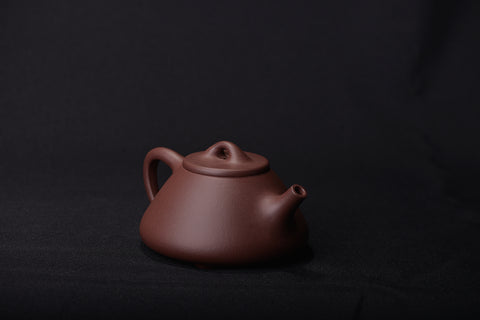
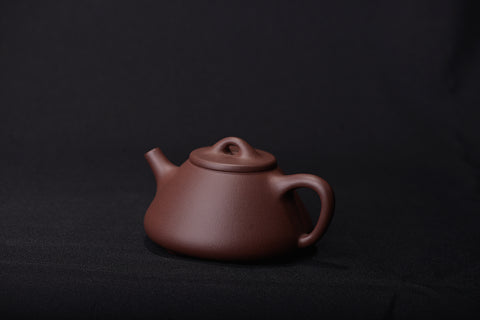
1966-1976 <br> Compared with the period of the Cultural Revolution (Cultural Revolution pots) compared with the previous period, the quality of the pots made during the Cultural Revolution was also difficult: this is the problem of management, because the standard level pots in the 1970s are the management of the purple sand factory Products under high performance, so the works are generally more neat; on the contrary, potters who did not have a big tree to enjoy the shade in the early stage had to rush at low prices to maintain their basic livelihood, so there will be a completely different "finished product effect" in terms of quality!
The horizontal pots in the 1970s were better than the horizontal pots in the 1980s . In the 1970s , the scale of the purple sand factory was small, and the requirements and actual level of the administrative management, quality control, mud, and even the most important "mold making" master were higher; In the 1980s , due to the sudden increase in the number of workers in the purple sand factory, the market expanded, the demand for mud suddenly increased multiples, and the time for the weathering of the raw ore was shortened. ) , so the level of commercial pots is getting worse.
In 1970, Yixing pots began to popularize seal inscriptions on the pot surface
From 1974 to 1976 , there were quite a lot of standard pots and pots ordered by Hong Kong tea shops. The earliest was the "recessive" method, and the base was stamped with " H441786 ". The tea making business is no longer available.
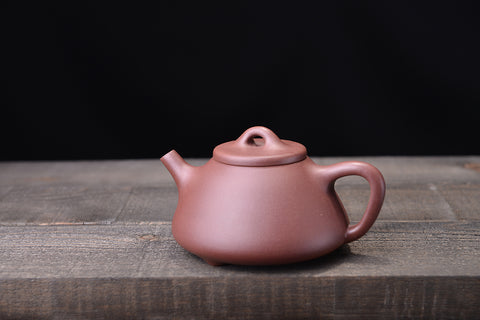
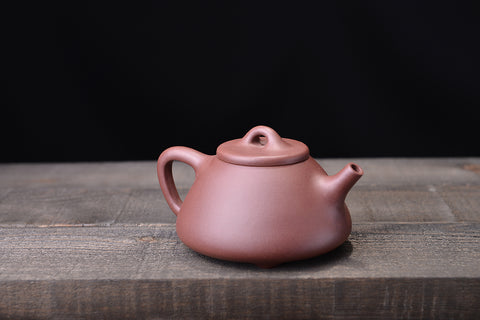
1975-1980s _
Apprentice assessment standard Pot seal carving records that it has fetal mud, purple sand, and vermilion clay. The body of the pot is mostly 4 or 6 cups, and 8 cups are less. The chrysanthemum carvings are all inscribed in "Yixing, China". Although they are potters' personal pots and pottery carving craft evaluation works, they are hardly famous.
1978-1982 <br> The bulk commodity pots exported to Japan and Hong Kong 1978-79 The first batch of Xiangxing tea shops were formed
There are 4 , 6 , 8 cups in the standard pot body , only 4 , 6 cups in Xianlao and Shih Tzu , the base soil is mainly red clay and purple sand , and a few black apples are black iron sand . The first batch of pots had some flaws in the black-glazed lettering, and there is no one's name on the cover, so the bottom inscription must be the "China Yixing" stamp and the "Xiangxing Tea Shop" black-glazed inscription.
Please drink Chinese oolong tea (8 or 10 cups ) from the end of 1970 to the beginning of 1980 ( 22 words)
Fujian Tea Company ordered a large number of horizontal teapots from the first factory of "Yixing Zisha Craft Factory" of "China Native Produce and Livestock Import and Export Corporation Fujian Branch Xiamen Branch". The mud materials are "red mud" and "clear cement". It is based on ten cup pots or called eight cups. However, the base of this batch of pots is 22 characters, the first line of "please drink" is engraved on the body of the pot, and the second line of [ Chinese Oolong Tea ] . The price of this batch of horizontal teapots was very high in Taiwan. At the end of 1980 , many imitations appeared outside the factory, and the signing method was similar to that of lettering.
Without the words [ please drink Chinese oolong tea ] , it is more confirmed that it is a later imitation, which has nothing to do with Fujian Tea Industry Company, it is just an imitation seal ... . ( There are two kinds of imitation products in the later stage: those with lettering ... and products that save money for lettering )
1980-1983 inner ultraviolet red "Xiangxing"
There are only 8 cups of standard teapots, purple sand thread ladles, and Xishi. The inner ultraviolet red has a soup stock and an apple body. , a small number of ultraviolet black tea seas and tea utensils sold within the day also have "Xiangxing Tea Shop" black glaze models. Some of the standard pots (black apples) of Xiangxing tea shop in the same period were made by the second factory, and their soil and process are slightly different from those of the first factory.

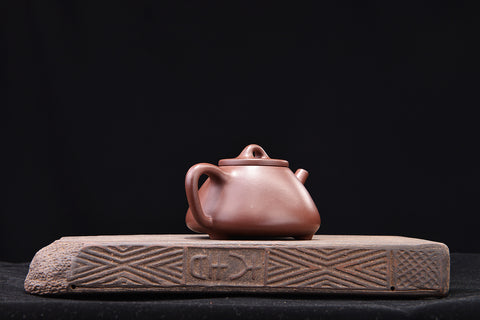
From 1982 to 1985 <br> The bottom of the pot was not signed, the year of Renxu, the year of Guihai, and the year of Jiazi. The reasons why the bottom of the pot was not signed are as follows: During the years of Guihai and Jiazi (1984~1985 ) , purple sand teapots were still regarded as the most famous teapots in Taiwan. "Bandits", buying and selling purple clay teapots is equivalent to "capitalist bandits". In the above-mentioned years, due to the turmoil and tight grip, some people were even sent to Taiwan's police chief to kill chickens and monkeys, so many people who sell purple clay teapots Tea houses and stalls called Yixing teapots "Hong Kong jars" in order to infer that these teapots came from Hong Kong, but the official attitude towards Hong Kong teapots was still "according to the rules"! Therefore, during this period, almost no one dared to display the teapots in the shop, so the sales immediately dropped! However, under the principle of "poorness leads to change, change leads to success"! ... Of course, Hong Kong's pot manufacturers are by no means fuel-efficient lamps. Immediately when placing an order at the former Yixing Zisha Craft Factory ( Factory No. 1 ) , please do not put "China Yixing" or "Jingxi Huimeng" on the bottom of the pot. "Chenzhi" and other Chinese-inspired deposits, so that when the store is seized, it will not be able to finish eating because of "conclusive evidence"! At the same time, there were also some teapots whose bases were engraved with "made in the year of Guihai, made in the year of Jiazi" and so on without Chinese meaning, so that stores in Taiwan could sell them to the public. It is said that it is Yingge pot and so on.
Note: It is because of this political reason that these pots appeared, and now there are myths such as "Jiazini" and so on, which lead to counterfeiters being able to play tricks on players. It is a pity ...
In 1984, Jiazi mud and rice cake mud
The so-called "Jiazini" is a "bluffing" phrase made up by the pot dealers. It refers to a batch of new red clay made by a factory in 1984 to replace what the pot dealers called "Zhu Ni".
Before 1984 , in order to sell the red clay in stock, these smugglers fabricated lies and myths such as "red clay is Zhuni" and "red clay can be used as a space shuttle". After the inventory of "Ni" was wiped out, a few years later, it was discovered that the "red clay pots" after 1984 had once again piled up like a mountain. Years of training, the mud that will disappear in the future!
Jiazini is both ordinary red mud and iron red powder. Rice cake mud has more spherical pulp than sand, so it is not suitable for making large pots, so it is mostly small ones.
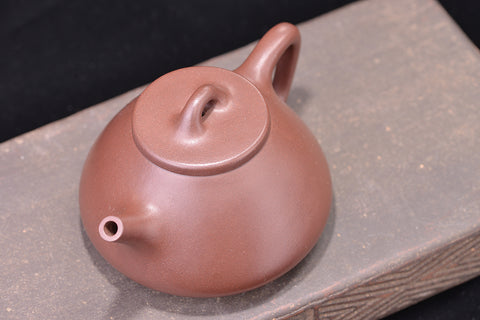
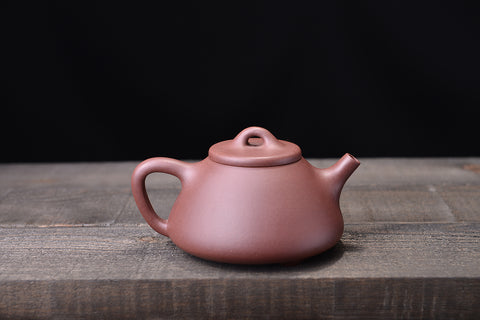
1985-1990s _
"China's Yixing Yichou year system" and "China's Yixing Gengwu year system" are limited to red clay standard pots, with a volume of 4 , 6 , and 8 cups. They are considered to be more valuable for collection among Jiyuan pots, but they are later products in the market. There are quite a few of them, the most common one is the standard Jiyuan teapot "Made in the Gengwu Year of Yixing, China". This teapot was molded by Mr. Zhou Daosheng at that time.
After 1988 , there is no official factory record of Epoch pots. The standard pot body soil and mud color have generally not returned to the previous level, so I will not go into details.
